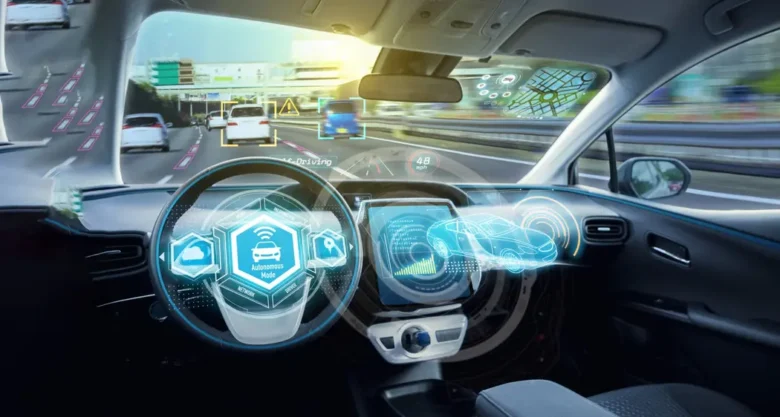With the continued advancements in autonomous vehicle technology, the transportation sector is undergoing one of the most significant transformations in its history. These technologies are not only changing the way people travel but also their expectations regarding safety, efficiency, and sustainability. Autonomous driving is gradually transforming from a vision of the future into a reality, thanks to AI-driven decision-making and an ecosystem of intelligent sensors. As companies invest heavily in R&D and infrastructure development, autonomous mobility is becoming increasingly widespread and reliable.
These developments are making cities better connected, transport systems more reliable, and the passenger travel experience more comfortable. The goal is to reduce errors, improve operational efficiency, and lower transport-related carbon emissions. Each new concept clarifies the prospects of intelligent transportation. In the long run, these changes will benefit people and economies worldwide.
AI and Machine Learning Enhancing Autonomous Decision-Making:
Artificial intelligence and machine learning are the brains of autonomous vehicles. They use environmental data to make decisions. These technologies enable cars to predict the behavior of other vehicles, recognize patterns, respond to unexpected obstacles, and continuously improve their driving models. Autonomous driving systems use powerful training algorithms and neural networks to simulate millions of realistic scenarios. This makes their responses more accurate and reliable over time.
This new technology significantly improves the safety of autonomous vehicles by enabling them to react faster and make better judgments in complex situations. As the artificial intelligence (AI) framework continues to develop, future cars will be better able to adapt to different road, weather, and traffic conditions. This continuous learning cycle makes autonomous driving systems smarter with every drive.
Next-Generation Sensor Technologies for Precise Navigation:
LiDAR, radar, ultrasonic sensors, and high-resolution cameras are all crucial sensor technologies for autonomous driving navigation. These instruments enable cars to create a three-dimensional view of their surroundings by accurately measuring distance, speed, object shapes, and road details. Recent developments in sensor fusion technology combine data from multiple sources, significantly improving the accuracy of real-time decision-making.
Both commercial and private vehicles can utilize advanced autonomous driving technologies due to the smaller size, lower power consumption, and lower cost of modern sensors. Thanks to ongoing technological advancements, next-generation sensors will enable vehicles to see the road even in adverse weather conditions such as fog, heavy rain, and low light. These technological advances will make driving on various road surfaces easier and more reliable.
Connectivity and V2X Communication: Shaping Smart Mobility
Vehicle-to-Everything (V2X) communications are transforming the way autonomous vehicles operate, enabling seamless communication between vehicles, infrastructure, pedestrians, and digital systems. This connectivity allows autonomous vehicles to access real-time information, such as traffic lights, road closures, accidents, and rapidly changing environments. Intelligent communication technologies significantly reduce the risk of accidents, improve traffic flow, and enhance navigation accuracy.
Future cities will have interconnected transportation networks, allowing thousands of vehicles to exchange data in real time, improving the collaborative efficiency of transportation systems. This ecosystem will help reduce congestion, save fuel, and simplify daily commutes. As connectivity becomes more widespread, autonomous vehicles will integrate more effectively into the current smart city framework.
Sustainable Autonomous Vehicle Technologies Reducing Environmental Impact:
Sustainability remains a key driver of innovation in the autonomous vehicle industry. Many next-generation autonomous vehicles will use electric motors, reducing pollution and making cities cleaner. Intelligent route planning and energy-efficient driving algorithms ensure that vehicles consume minimal energy and achieve maximum efficiency. Autonomous vehicle sharing services also help reduce the number of vehicles on the road, alleviating traffic congestion and lowering carbon emissions for everyone.
We expect autonomous fleets to run entirely on green power as transportation systems incorporate more renewable energy sources. This combination of independence and sustainability contributes to achieving long-term environmental goals while providing affordable mobility for individuals and businesses.
Safety Advancements Transforming the Future of Travel:
The fundamental goal of innovation in autonomous vehicles remains safety. The constantly evolving features strive to lower the risk of accidents and guarantee the safety of passengers. Advances in autonomous vehicle technology constantly refine advanced driver assistance systems (ADAS), emergency braking systems, lane-keeping systems, and collision avoidance algorithms.
Real-time monitoring and predictive analytics enable vehicles to detect potential hazards before they escalate into actual risks, significantly improving driving safety. Furthermore, autonomous driving systems can eliminate many risks associated with human error, such as distracted driving or driving under the influence of alcohol. As safety continues to improve, public confidence in autonomous vehicles will also increase, accelerating their adoption.
Conclusion:
Thanks to intelligent systems, environmentally friendly design, and more robust safety measures, the rapid development of autonomous vehicle technology is ushering in a new era for transportation. These advancements are transforming how individuals and companies perceive travel, making it easier, safer, and more environmentally friendly. Thanks to ongoing advances in artificial intelligence, connectivity, sensor accuracy, and energy optimization technologies, autonomous vehicles will become an integral part of the future transportation network.
As new ideas continue to emerge, cities around the world will experience smoother traffic, lower travel expenses, and more convenient modes of transportation. The combined effects of these technologies herald a future of smoother, more predictable, and increasingly automated transportation. Each discovery brings society one step closer to a world where intelligent transportation is the norm, bringing enormous benefits in the years to come.
FAQs:
1. What is an autonomous vehicle?
An autonomous driving system, also called an autonomous vehicle, combines artificial intelligence, sensors, and connectivity technologies to drive and perform tasks without human intervention.
2. How do sensors enable autonomous vehicles to operate?
Sensors help cars understand their surroundings and make intelligent decisions by detecting objects, distances, movement, and environmental conditions.
3. Are autonomous vehicles safer than regular cars?
When properly designed and maintained, autonomous driving systems can be safer because they reduce the risk of human error and can react in real time.
4. Can autonomous vehicles improve traffic flow?
Yes, autonomous vehicles can improve traffic flow, reduce congestion, and increase overall mobility efficiency through predictive models and vehicle-to-everything (V2X) communication.
5. Will autonomous vehicles have a smaller environmental impact?
Many autonomous vehicles use electric propulsion and intelligent driving algorithms, which can reduce pollution and promote eco-friendly travel.




